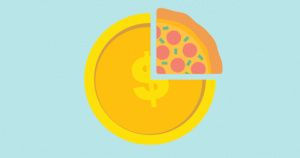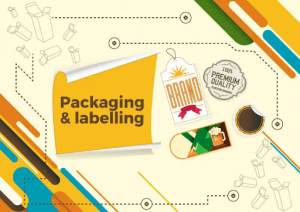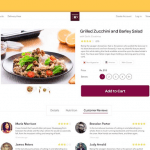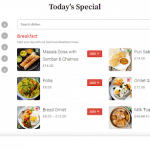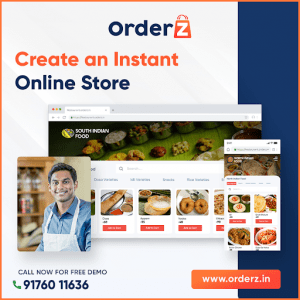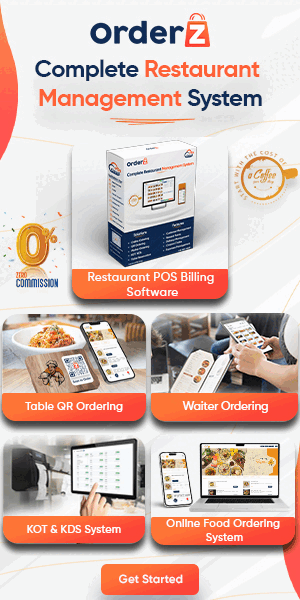Do you enjoy baking or cooking? You would likely want to learn if you said yes to any of the two questions. You may express your creativity while supporting a very resilient economy by selling food. By 2027, Statista projects that the market for food and groceries will be worth about 4.2 trillion US dollars.
Everyone enjoys eating delicious food, and we all need to eat each day. Therefore, when it comes to selling food online, you need always have a customer base, regardless of evolving eCommerce trends. However, there are several issues to take into account. For instance, using additional care while packaging food for online sales. If an ingredient or allergy risk is not disclosed, you risk getting into difficulty with the healthcare authorities.
Everything from comprehending international food rules to deciding which platform is appropriate for your business to advertise your business will be covered by our guidance. By that time you’ll not only fully comprehend how to sell food online, but also be able to put all you’ve learned into practice and launch your online store.
You can successfully launch and operate an online food business with only a little advice, which is a good thing. The information you need to get started, including tips on how to deal with the difficulties posed by online food sales, is provided below.
This thorough blog will guide you on how to sell food online by going over all the important phases of starting a food business, from sourcing, and labelling to marketing.
7+ Great Ideas for Selling Food Online
-
Understand the law
Before you can seriously consider launching an online food business, you must be aware of the regulations. Your customers are in danger if you make a mistake with anything (including your package or ingredient list). If you don’t adhere to the proper regulations, you could face significant fines.
Intends to sell food from their residence must abide by the “cottage food laws” essentially, this implies that you must understand proper food storage techniques and keep food away from potentially harmful pathogens like pets. You will also require:
- An official business licence.
- Once a year, your government contacts kitchen inspections and issues zoning permits.
- To keep food safe, hold frequent training sessions for food handling.
- Choose your state and obtain a business licence there. On the SBA website, you can carry this out.
Learn about the rules and regulations that apply to the management and sale of food in your area.
-
Choose your niche
If you plan to sell food online, select a niche because it will help you attract a loyal following of customers. When choosing your niche, you must consider your target audience. The business is incredibly diversified, so presuming that every person is your consumer won’t help you satisfy them. We have put up a list of possible food-related businesses for you to launch.
Several niche choices include:
- Customised desserts and unique meals
- Fair-trade, natural, and organic foods.
- Food prepared to meet dietary requirements. (gluten-free or dairy-free)
- Artisanal, small-batch, and fine foods.
It can be preferable to concentrate on products that don’t demand a significant investment if you’re just starting off selling food products online. For example, you don’t need to purchase specialised equipment to manufacture baked items, dried herbs, sweets, or canned foods, keep things basic and enjoyable at first.
-
Find your supplier
You will require a trustworthy supplier whether you are creating food products from scratch or selecting products to sell to your audience. The right supplier selection is crucial in the food business. Making the wrong choice could harm your brand and give consumers food poisoning or other illnesses. Make sure you take all necessary precautions when getting ready to sell food from your home.
Spend some time reading the reviews that other customers have written when looking for ingredients and suppliers. Look for a supply chain that provides a wealth of information on the origins of the products from your suppliers.
If you’re looking for a supplier with certain credentials (such as ingredients from sustainably derived sources), get in touch and request extra information if you can’t locate proof of those facts online. Any reliable source ought to be able to give you the details you need to feel at peace.
Keep the following in mind while you are looking for a supplier:
- Costs of manufacturing
- Type of raw resources used
- Shipping and delivery schedules.
- References from previous clients.
- Accessibility to materials and communication.
-
Food price
The process for figuring out how much food items cost is flexible. The only way to guarantee that your pricing is accurate is to calculate the cost per item while accounting for ingredient costs, labour costs, and manufacturing.
Additional expenses to consider are the cost of culinary supplies, storage rentals, insurance, licence fees, and employee salaries. Each of these needs to be considered to make sure that your business at least breaks even.
For your business to generate a profit, you must also choose your profit margin and include it with the aforementioned expenses. A 10% margin is typically thought to be ordinary, while a 20% margin is thought to be high. However, the ideal net profit margins vary amongst industries.
As an alternative, research the pricing tactics of your competitors. Maintaining prices establishes your brand and encourages word-of-mouth advertising.
-
Branding, packaging, and labelling
Identity should be picked first for branding reasons. With a name that complements it, your customers can understand the meaning of your brand! As a result, your business’s name has a significant influence. In addition to engaging with customers, the proper name boosts your business’s efficiency.
You must select a suitable business name before beginning any business promotion. Keep in mind that your branding should reflect the services you provide and the intended audience.
If you want to sell food products online, you must demonstrate your product’s superiority and the benefits of purchasing it. The proper branding enables quick and simple completion of these tasks. Furthermore, branding can boost consumer perception of your business by developing and designing a visually beautiful logo that serves as your company’s expression, branding may also help your business become more recognisable to consumers.
They can help you with selecting the ideal colour scheme, typography, form, and material, ensuring that everything blends to create a package that is appealing to the eye and fulfils its intended function. Each country has distinct regulations on labelling, which may include country of origin, nutritional information, allergen warnings, and best-before dates, aside from the aesthetics of your packing. The FDA food ingredient you must give customers to help them make educated decisions about their purchases.
-
Content for your online store
Get the content ready for your online store. Similar to branding, your store’s aesthetics are vital in getting customers to buy food goods without tasting them. The many content kinds you should produce for your online grocery store are listed below.
Food photos:
Your product photographs are a customer’s initial point of contact with your food, and first impressions count. DIYing your photo shoots is a possibility, or you can hire a photographer that has experience correctly styling and photographing food.
Take close-up photos of the product and its packaging to capture the texture and true colours. You can also try lifestyle photography that provides serving hints and pairing suggestions. This can help move your food out of the store and into the shopping cart of a customer.
Product Descriptions
It is essential and useful to include thorough product descriptions that explicitly describe the flavour and texture of the food you sell to attract customers to your online store. Don’t leave any space for doubt. Always remember that a sceptic will not buy anything.
Basic pages:
The following essential pages should be present on your eCommerce website:
- Homepage
- About us page
- Contact us page
- FAQs
Design product pages
The product pages of your eCommerce site are its vital organs. Before choosing to buy something or leave the store, customers will learn what you sell there. Excellent photos, in-depth descriptions, call-to-action (CTA) icons, and clear pricing and shipping information may all be found on product pages that convert effectively.
-
Create your online store
All small businesses must have a presence online. Selling food online is easier once you have an online business. This is essential for bringing in customers and streamlining the work you’ll be doing as an entrepreneur.
While blogs, webinars, and social media may assist you in attracting customers from all over the internet, your website will continue to be the foundation of your online food business. In contrast to a marketplace, once the customers start coming, you won’t need to remain competitive with any other sellers.
Make something that will appeal to your target market with Orderz. It allows you to create your very own online store without any technological expertise.
Launching an online food store with Orderz only takes a few minutes. It is a straightforward and mobile-friendly software solution, which is appropriate given that the majority of clients now make purchases using their smartphones. Orderz’s biggest feature is that all of the laborious coding work has already been completed for you.
You can quickly modify the look and feel of your online business, manage online business, and add new features. Orderz has created 3 unique themes just for you.
-
MARKET YOUR FOOD BUSINESS
Once your brand and store are well-known, it’s time to start marketing your business. For the majority of businesses, a multi-channel marketing plan will yield the best results. Here are some useful 5 ideas for promoting your online food store:
- Word-of-mouth
- Social media
- SEO
- Pay-per-click ads
- Influencer marketing
Words of wisdom:
Running up your own online food business is a pleasurable and frequently lucrative method to realise your entrepreneurial goals. If your firm has the right components, such as a beautiful website, outstanding product, and reasonable pricing, you’re already on the right track.
In the food business, there is always space for new businesses. It makes sense to learn how to sell online and take advantage of eCommerce given the increasing demand and level of competition. To see your food business flourish, adhere to the above procedures. With the appropriate technique and a willingness to put in the effort, you can start a successful food business in no time.
Thanks for reading my blog on HOW TO SELL FOOD ONLINE IN 2022.






